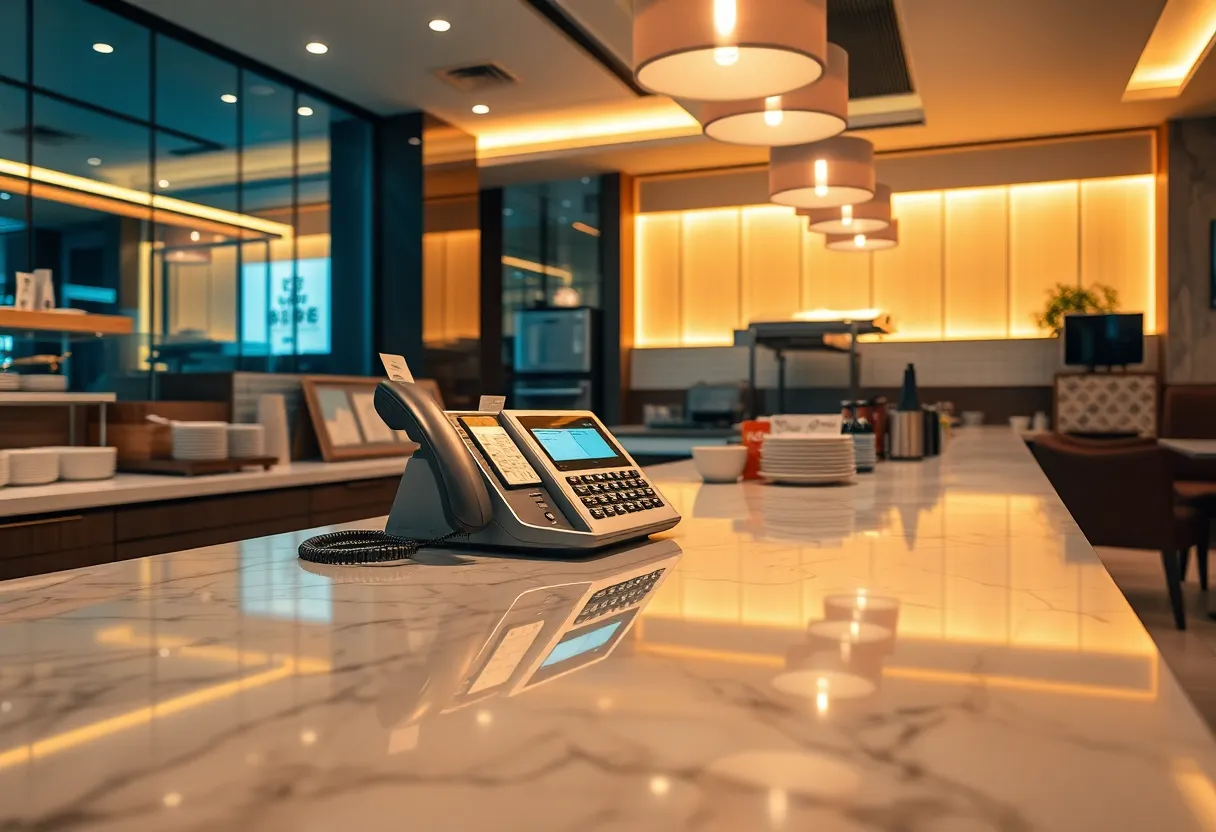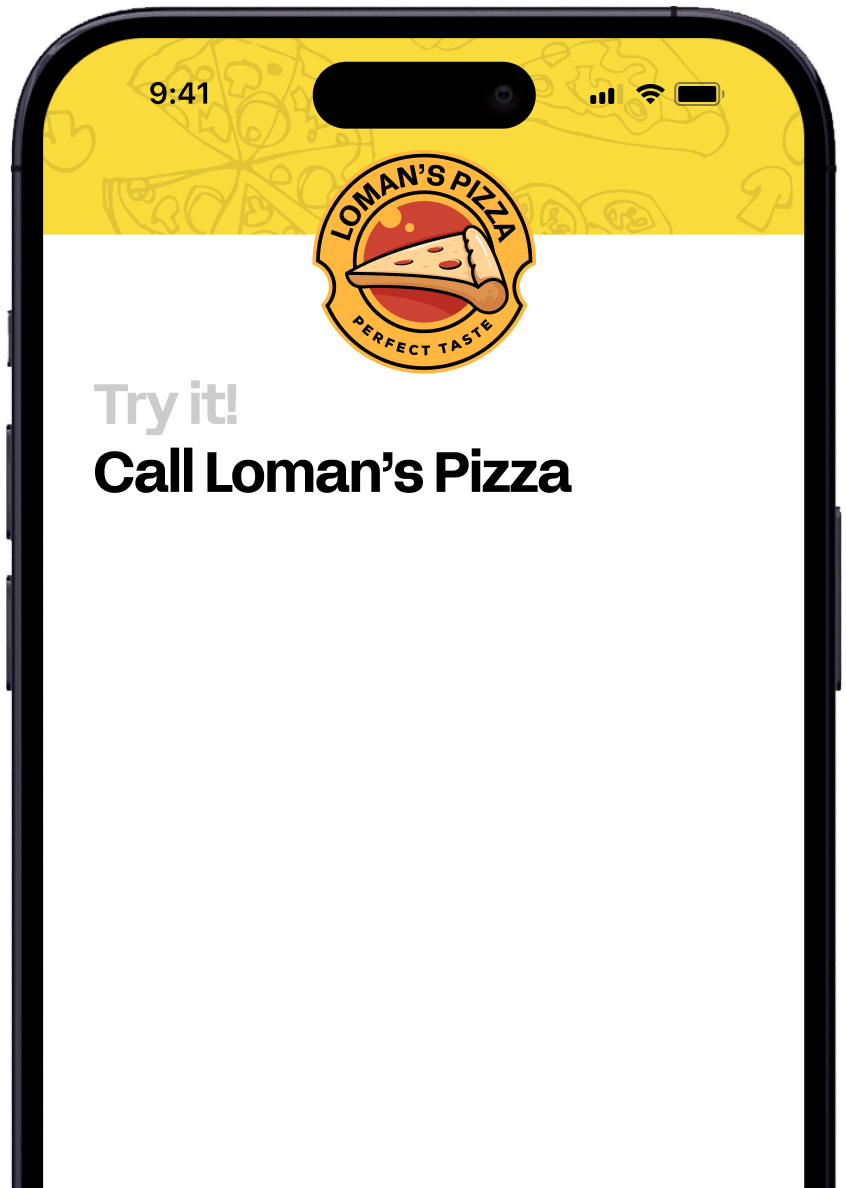July 19, 2025

Restaurants have long grappled with the challenge of managing phone calls efficiently. In the past, a busy signal or unanswered phone meant lost business and frustrated customers. Let's trace how restaurant communication has changed over time:
The rise of online ordering platforms partially addressed these issues, but came with their own set of limitations:
Enter AI call systems - the next leap in restaurant communication. These systems combine the best of both worlds:
AI phone systems are changing how restaurants handle customer interactions. They're not just answering calls - they're boosting efficiency and sales. Our product, Loman.ai, is designed to do exactly this for restaurants.
This video explores how AI is shaping the future of restaurant operations, including communication systems like those we've discussed.
As we move forward, the integration of AI in restaurant communication is likely to become more widespread, addressing long-standing challenges in the industry.
AI call systems are changing how restaurants handle phone orders and reservations. These smart tools work around the clock, taking care of customer calls even when staff are busy or the restaurant is closed.
Some of the main things AI call systems can do:
These systems connect smoothly with point-of-sale (POS) software that restaurants already use. This means orders go straight into the kitchen without extra work for staff.
Check out this video to see how AI can handle phone orders for restaurants. It shows how the technology works in real situations.
Using AI for phone calls helps restaurants in a few key ways:
When restaurants use AI call systems, they often see:
Our product, Loman.ai, does all this and more. It's designed specifically for restaurants, so it understands the unique challenges of food service.
Restaurants using AI call systems are seeing real results. Many report a 20-30% jump in phone order sales. This comes from catching orders that might have been missed before.
Here's what some restaurant owners have said:
"We're making more money from orders we previously missed, and my staff is more efficient." - Nick, Restaurant Owner
Another owner, Beth, noticed: "Sales are up almost 25% since we started using AI for calls."
It's not just about money, though. Staff are happier too. They can focus on making food and serving customers instead of being stuck on the phone.
AI call systems are helping restaurants do more with less. They're catching orders that would have been lost, making sure tables are filled, and keeping both customers and staff happy. For many restaurants, it's becoming a key part of running a smooth operation.
AI phone systems are just the beginning for restaurants looking to boost efficiency. As these technologies evolve, we're seeing a shift towards more integrated and predictive AI solutions that go beyond just handling calls.
Here are some key trends shaping the future of AI in restaurants:
These advancements point to a future where AI becomes an invisible support team, working behind the scenes to streamline operations. Restaurant owners who adopt early stand to gain a significant competitive edge.
But with new tech comes new challenges. Restaurants need to consider:
The key is finding the right mix of AI assistance and personal service. Tools like Loman.ai are designed to handle routine tasks, freeing up staff to focus on creating memorable dining experiences.
As AI continues to evolve, we can expect even more sophisticated features:
The restaurants that thrive will be those that embrace AI as a tool to enhance, not replace, the human elements of hospitality. By automating the mundane, staff can dedicate more time to the aspects of service that truly delight customers and keep them coming back.
As we look ahead, it's clear that AI will play an increasingly central role in restaurant operations. The question for owners isn't if they should adopt AI, but how to do so in a way that aligns with their unique brand and customer expectations.
AI call systems are changing the game for restaurants. They're not just a fancy tech upgrade - they're a practical tool that can seriously boost efficiency. By handling calls, taking orders, and managing reservations, these systems free up staff to focus on what matters most: great food and service.
Restaurants that adopt AI early are seeing real benefits. They're catching more orders, filling tables faster, and keeping customers happy. It's not about replacing people, but about making their jobs easier and more productive.
Loman.ai offers a solution tailored for restaurants of all sizes. It works with your existing systems and can be customized to fit your specific needs. If you're curious about how AI could work for your restaurant, checking out a demo might be worth your time.
As we wrap up, it's clear that AI in restaurants isn't just a trend - it's becoming a key ingredient for success. Whether you run a small pizzeria or a large chain, there's likely an AI solution that could help streamline your operations. The restaurant industry is always evolving, and AI is shaping up to be the next big step forward.
AI call system pricing varies based on features and call volume. Most providers offer tiered plans starting around $100-$200 per month for small restaurants. The return on investment often outweighs the cost through increased order accuracy and captured sales.
Many AI call systems, including Loman.ai, integrate with popular restaurant POS systems like Square, Toast, and Clover. Check with the provider to ensure compatibility with your specific setup. Most offer easy integration without requiring major tech changes.
Customer reactions are generally positive when AI agents are well-implemented. Many appreciate the quick, accurate service and 24/7 availability. Modern AI voices sound natural, and the systems can handle complex orders and questions, often improving overall customer satisfaction.
Yes, advanced AI call systems are trained on specific restaurant menus and can manage complex orders, modifications, and dietary restrictions. They can clarify requests and confirm details, ensuring accuracy. For very unusual situations, most systems can smoothly transfer to a human staff member.
Setup time varies but typically takes a few days to a week. This includes integrating with your POS, training the AI on your menu and policies, and testing. Many providers offer support throughout the process to ensure a smooth transition. Loman.ai, for example, aims for minimal disruption to your operations during setup.

Enter your information in the form to receive a call from Loman and place an order like a customer would!